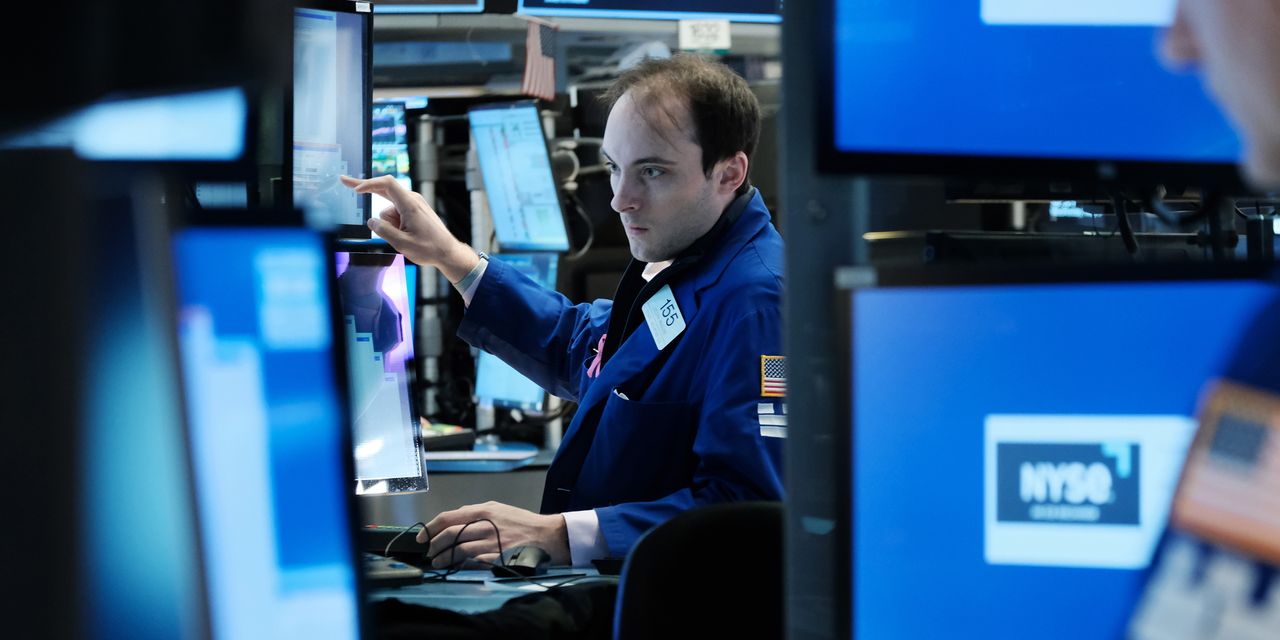It isn’t time to get bullish just yet, but darn, we’re getting close.
For now, the market appears to be holding its breath. The
Dow Jones Industrial Average
slid 1.11% this past week, the
Nasdaq Composite
ticked up 0.40%, and the
S&P 500 index
slipped 0.29%, its sixth-straight week of moves that were less than 1% in either direction. It’s as if investors are waiting for something to break one way or the other.
And it may break higher. Consider this past week’s inflation data. On Tuesday, the April consumer price index showed its 10th straight month of decelerating inflation, and Wednesday’s producer price equivalent had the number two in front of it—rising at the slowest annual pace since early 2021.
That’s not just good news for the Federal Reserve, which is trying to wrestle prices lower, but for the stock market, too. When the annual CPI rate has declined by at least five percentage points over the previous year, the S&P 500 has put up a median return of 14.9% over the following 12 months. according to data from Bespoke Investment Group.
Slowing inflation also points to the possibility of a Fed pause coming at next month’s Federal Open Market Committee meeting. Futures-market pricing implies a greater than 90% likelihood of the Fed holding the federal-funds rate steady in June at a target range of 5.00% to 5.25%. There’s still time for that to change, especially with May’s employment and inflation figures due before the meeting. Stocks have historically done well during a Fed pause, writes Jonathan Golub, chief U.S. equity strategist at Credit Suisse, who notes that the S&P 500 has returned 16.9% on average in the 12 months following the last interest-rate hike of a cycle, while losing 1% on average in the year after the first rate cut.
Investors aren’t positioned for a rally. Systematic trend-following funds have been raising their equity exposure lately to slightly above neutral for the first time since late 2021, according to Deutsche Bank’s Parag Thatte. But discretionary investors are heavily underweight the market: Equity exposure is at its lowest level in a year and at only the ninth percentile historically. Many investors are waiting for the market to drop before putting cash to work. But if it breaks higher, they might have to start buying.
There is still a lot that can go wrong. First and foremost, there’s the debt-ceiling fight and all of the worst-case scenarios that would result from a U.S. default. Banks could still pull back on lending enough to cause a credit crunch. There’s also little confidence in the earnings outlook for the second half of the year, and recession signals, outside of the jobs market, continue to flash red.
That’s a wall of worry, but one that the stock market appears ready to climb. The balance of evidence is leaning in a more bullish direction. Investors waiting for the next drop to buy in might not get that chance.
Write to Nicholas Jasinski at [email protected]
Read the full article here













